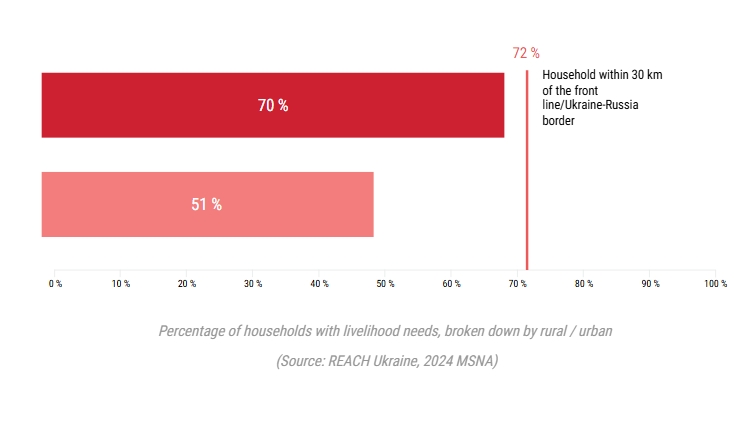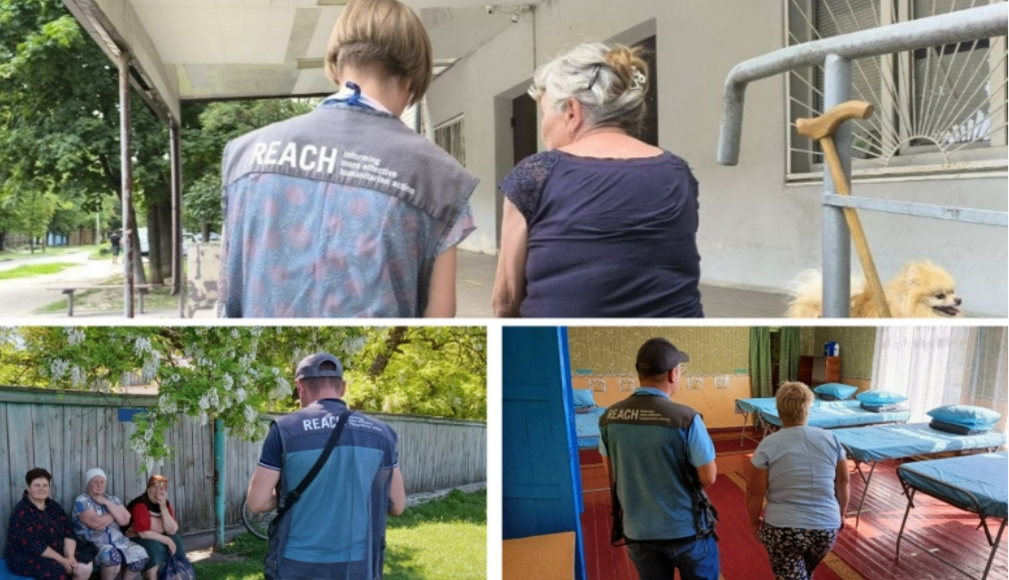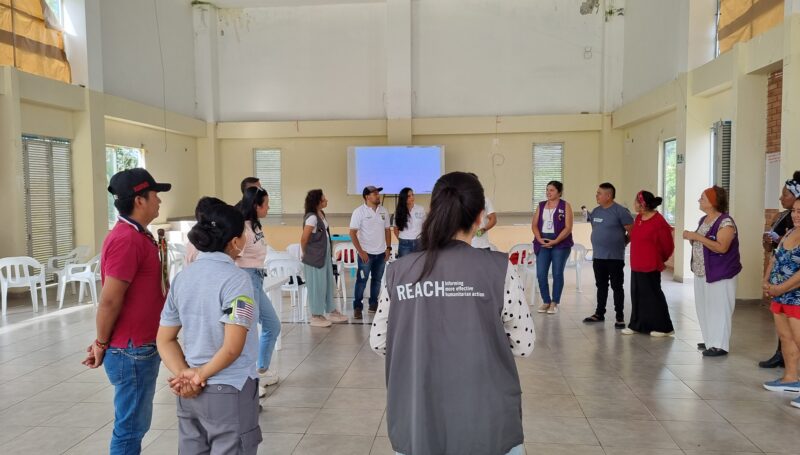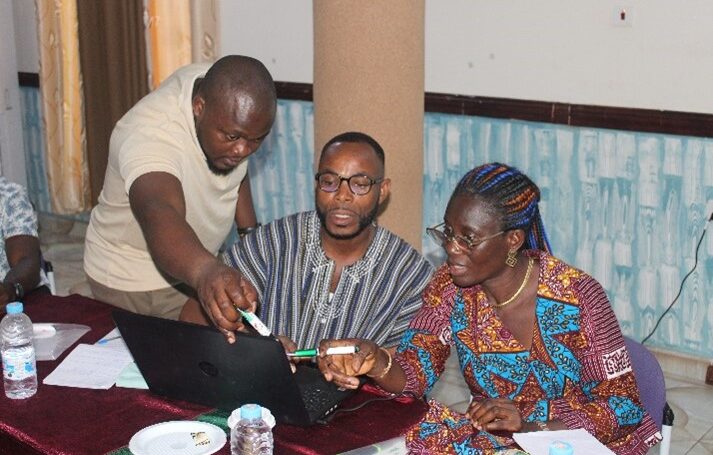Three years into the full-scale invasion of Ukraine, a stark divide in livelihood needs has emerged between rural and urban households. The latest Multi-Sector Needs Assessment (MSNA) story map reveals that rural communitiesare facing economic hardships at levels comparable to those in frontline areas and areas near the Russian border. Understanding this urban-rural divide is critical for shaping effective humanitarian responses.
Key Takeaways:
Rural Communities Face Severe Livelihood Needs
Rural households are particularly vulnerable in Ukraine, both overall and in conflict-affected areas. They display similar levels of livelihood need as those in frontline and border regions. While lower income levels are a major driver of rural livelihood needs, they are not the sole factor. In conflict-affected areas, rural households were also twice as likely to report using crisis and emergency coping strategies, further indicating their economic distress.

Urban Resilience Varies by City Size
Urban households have thus far demonstrated economic resilience to the conflict’s effects. In conflict-affected areas, larger cities with populations over 100,000 demonstrate a lower prevalence (46%) of livelihood needs. In contrast, smaller urban areas exhibit similar vulnerability levels to rural regions. While urban centres may offer more employment opportunities and stronger economic structures, their ability to shield populations from economic distress depends on location and conflict exposure
A Nuanced Approach to Humanitarian Assistance is Needed
Households in close proximity to the conflict or highly exposed to conflict incidents are not always more likely to experience livelihood need. Only at the most extreme levels of exposure—households within 30 kilometres of the front line, the Ukraine-Russia border, or in extremely conflict-affected areas—were livelihood needs significantly more common. The MSNA findings suggest that urban-rural dynamics play a stronger role in shaping vulnerabilities. Rural households not only face economic instability but also struggle with shelter, water, and sanitation issues. Integrating these factors into humanitarian strategies would help ensure effective programming and prevent growing rural-urban disparities.
The complexities of both rural and urban livelihood needs are presented in the story map. To read more, click: https://dashboards.impact-initiatives.org/ukr/urban_rural_divide_storymap/
Read the full report in English: https://repository.impact-initiatives.org/document/repository/623c177d/REACH_UKR_CCIA-Brief_MSNA_December-2024.pdf or in Ukrainian: https://repository.impact-initiatives.org/document/repository/0d0c1e31/REACH_UKR_CCIA-Brief_MSNA_December-2024_UKR.pdf









